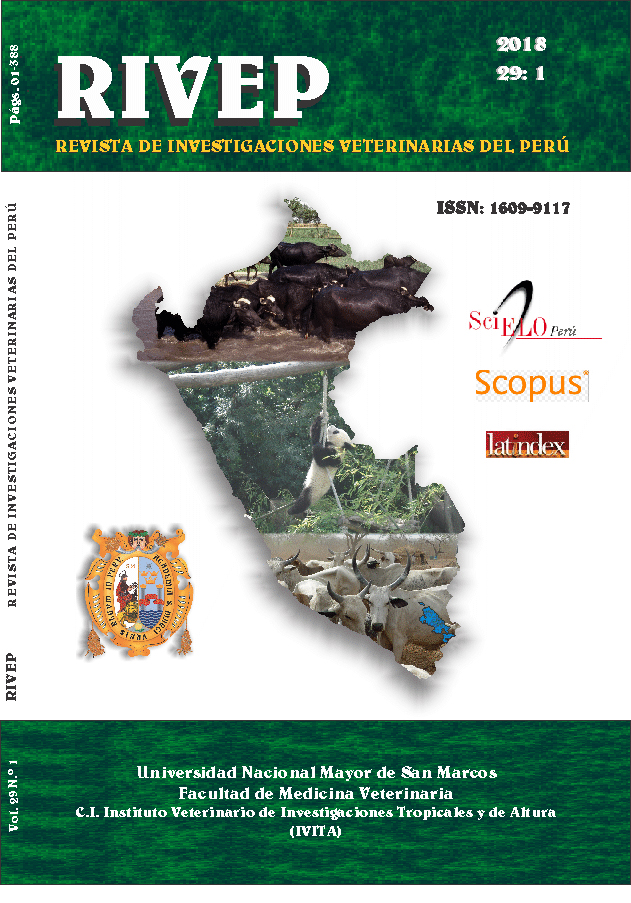Spine injuries characterization by computed tomography in canines in Lima, Peru
DOI:
https://doi.org/10.15381/rivep.v29i1.14204Keywords:
tomography, discopathies, chondrodystrophic, disc herniationAbstract
The objective of this study was to characterize spine injuries in dogs by computed tomography. The tomographic diagnoses were related to the demographic characteristics of dogs under study (sex, size, breed, and age). A total of 79 tomographic diagnoses were evaluated between June 2010 and July 2014. The results showed a greater frequency of lesions in males of defined breed, medium size and in the age group of 4-7 years. Twentytwo tomographic diagnoses were obtained, the most frequent being medial disc herniation (32.8%, 26/79) and laminar calcification of the dural sac (11.4%, 9/79). A total of 115 lesions were identified in the spine, the lower spine being more affected (48.7%, 56/115). At the level of the intervertebral spaces, the thoracic region T12-T13 presented the largest number of lesions (14%, 16/115), especially discopathies.Downloads
Downloads
Published
Issue
Section
License
Copyright (c) 2018 Patricia Shimose C., Eben Salinas C.

This work is licensed under a Creative Commons Attribution-NonCommercial-ShareAlike 4.0 International License.
AUTHORS RETAIN THEIR RIGHTS:
a. Authors retain their trade mark rights and patent, and also on any process or procedure described in the article.
b. Authors retain their right to share, copy, distribute, perform and publicly communicate their article (eg, to place their article in an institutional repository or publish it in a book), with an acknowledgment of its initial publication in the Revista de Investigaciones Veterinarias del Perú (RIVEP).
c. Authors retain theirs right to make a subsequent publication of their work, to use the article or any part thereof (eg a compilation of his papers, lecture notes, thesis, or a book), always indicating the source of publication (the originator of the work, journal, volume, number and date).










